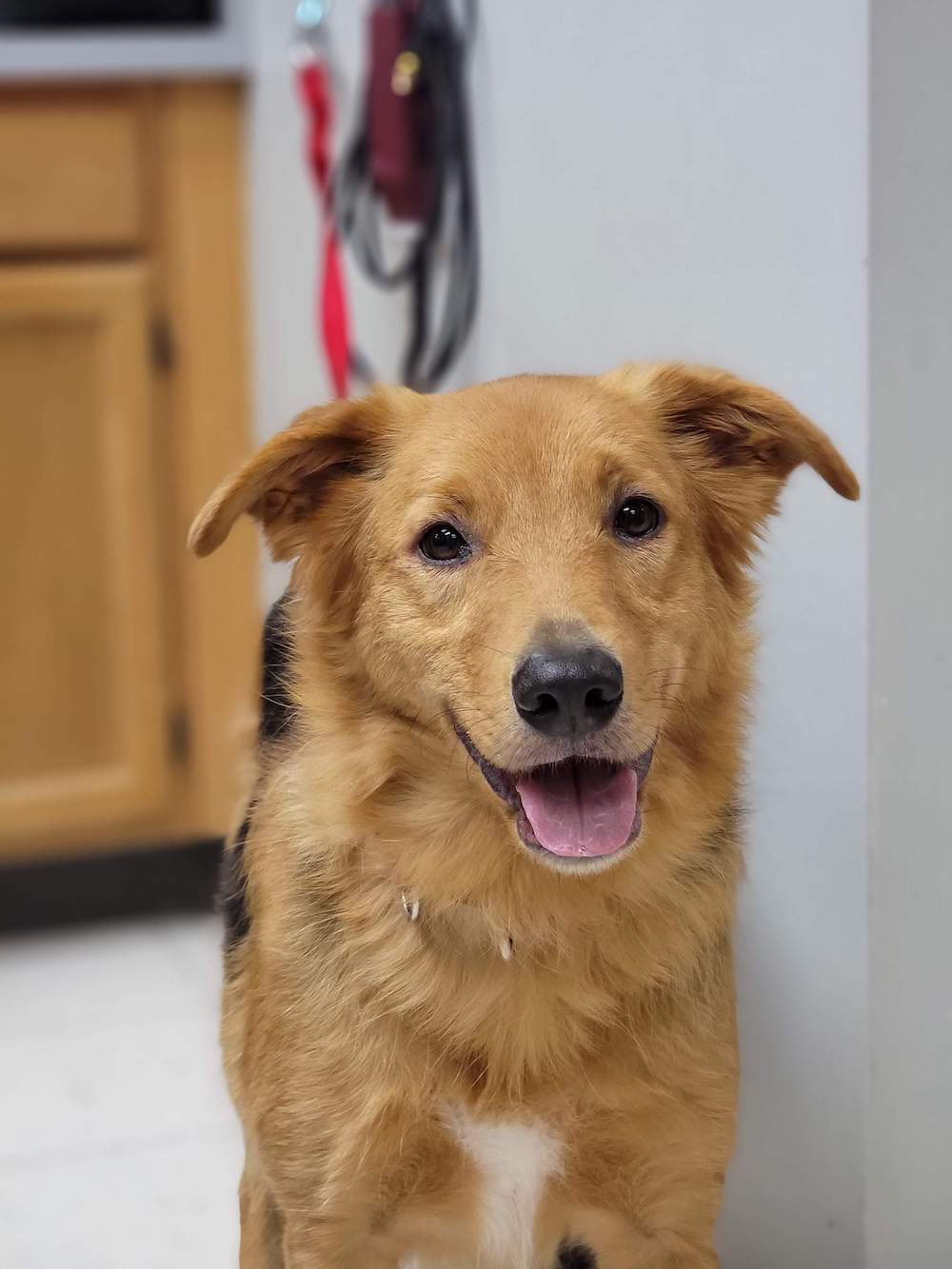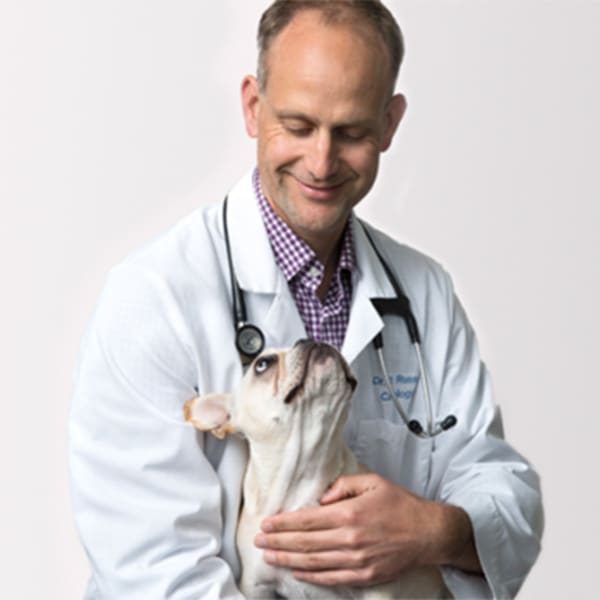How to Tell if Your Pet Needs an Ultrasound For Dogs}
Wiki Article
The Function of Ultrasound and CT Check in Modern Veterinary Practices: Insights From Experienced Professionals
In contemporary vet methods, ultrasound and CT scans significantly improve analysis capabilities. These imaging methods give essential insights right into animal health, guiding therapy choices. Experienced experts identify the distinct benefits of each modality. Ultrasound supplies real-time analyses, while CT checks provide intricate physiological information. Comprehending their roles and applications elevates important concerns concerning their influence on patient results and the future of vet diagnostics. What insights can be gained from their incorporated use?Comprehending Ultrasound in Veterinary Medication
Ultrasound is an essential diagnostic device in vet medicine, providing a non-invasive approach to imagine interior structures. This imaging technique utilizes high-frequency acoustic waves to develop real-time pictures of cells and body organs, enabling vets to assess problems without surgical treatment. Common applications include examining the heart, liver, kidneys, and reproductive organs, in addition to checking pregnancies.The procedure is fairly quick and can be executed in different settings, making it an easily accessible option for veterinarians. Unlike radiography, ultrasound offers comprehensive details regarding soft tissues and blood flow, which is vital for exact diagnoses.Veterinary specialists depend on ultrasound to discover irregularities such as lumps, cysts, and fluid accumulation. Its capability to lead biopsies and other treatments better enhances its utility in clinical practice. By offering a effective and secure way to examine inner anatomy, ultrasound has actually become a foundation of contemporary vet diagnostics.
The Benefits of CT Checks for Animal Diagnostics
CT scans deal significant benefits in vet diagnostics by giving improved accuracy in recognizing inner problems (CT Scans For Dogs). As a non-invasive imaging technique, they ensure the security and comfort of animals during examinations. On top of that, CT checks promote a thorough assessment of interior structures, enabling a lot more effective treatment planningEnhanced Diagnostic Accuracy
Developments in imaging innovation have considerably enhanced diagnostic accuracy in vet medicine, particularly via the usage of CT scans. These scans supply comprehensive cross-sectional photos of an animal's interior frameworks, allowing veterinarians to recognize problems with precision. The high resolution and three-dimensional abilities of CT imaging facilitate the discovery of problems such as lumps, cracks, and internal bleeding that may be missed with traditional imaging methods. Additionally, CT scans can help in pre-surgical preparation by using a thorough view of physiological relationships. This degree of detail not just improves the precision of medical diagnoses yet also aids in customizing reliable therapy plans. The combination of CT technology right into veterinary practices is transforming the landscape of pet health care, improving end results for people.Non-Invasive Imaging Method
The introduction of non-invasive imaging strategies has actually reinvented animal diagnostics, with CT checks becoming a famous device in vet techniques. These scans offer high-resolution, cross-sectional photos of a pet's inner frameworks, allowing veterinarians to examine complex conditions without the requirement for invasive procedures. The advantages of CT scans include their ability to spot tumors, cracks, and inner bleeding with impressive accuracy. In addition, they help with the examination of soft cells and body organs, improving analysis capabilities. The rate of CT scanning allows fast decision-making, which is vital in emergency scenarios. By lessening stress and pain for the pet, CT scans add to a more gentle method to diagnostics, eventually improving treatment results and progressing vet treatment.Comprehensive Internal Assessment
A comprehensive internal assessment is important for accurate diagnosis and efficient treatment in vet medication. CT scans offer substantial advantages in this regard, giving in-depth cross-sectional photos of an animal's internal frameworks. This sophisticated imaging modality improves visualization of complex physiological areas, allowing vets to identify irregularities such as tumors, cracks, and inner blood loss with higher accuracy. Furthermore, CT checks facilitate the analysis of conditions that might be challenging to identify via conventional techniques. The speed and precision of CT imaging likewise add to timely interventions, enhancing client end results. As veterinary techniques significantly include CT modern technology, the benefits of extensive interior analyses become evident, strengthening the importance of this device in modern-day veterinary diagnostics.Contrasting Ultrasound and CT Imaging Techniques
While both ultrasound and CT imaging offer essential roles in vet diagnostics, each technique provides distinct benefits and limitations that can affect scientific decision-making. Ultrasound is particularly valued for its real-time imaging abilities, permitting veterinarians to observe vibrant physiological processes. This method is non-invasive, mobile, and does not entail ionizing radiation, making it a more secure option for both pets and medical professionals. Nonetheless, ultrasound may have constraints in imagining particular physiological structures or deep tissues.Conversely, CT imaging supplies in-depth cross-sectional sights of the body, enabling for exact localization of irregularities. It succeeds in reviewing complicated body organs and structures, specifically in the thorax and abdominal area. CT scans call for sedation or anesthesia in many instances and include direct exposure to ionizing radiation. Ultimately, the option in between ultrasound and CT depends upon the specific clinical situation, the area of rate of interest, and the necessity of the diagnostic needs.Case Researches: Effective Diagnoses With Imaging
Study illustrate the substantial improvements in diagnostic accuracy accomplished with innovative imaging technologies like ultrasound and CT scans in vet techniques. These improvements not just improve the discovery of various conditions but additionally help with effective and timely therapy strategies. Evaluating particular situations can highlight the transformative influence of these imaging techniques on veterinary medication.Analysis Precision Improvements

Imaging Technology Advancements
As veterinary imaging technology continues to advance, its effect on analysis abilities becomes see this site significantly noticeable. Recent situation studies highlight the effective application of advanced ultrasound and CT check strategies in recognizing intricate problems. As an example, a vet clinic made use of high-resolution CT scans to detect a rare form of lung cancer in a pet, which traditional imaging had missed out on. In a similar way, an ultrasound evaluation disclosed an abdominal mass in a cat, prompting timely surgical treatment and a positive end result. These improvements not just boost diagnostic precision however also enable veterinarians to create targeted therapy strategies. By leveraging cutting-edge imaging technologies, veterinary experts are considerably boosting patient care, leading to extra reliable monitoring of numerous health conditions in pets.
The Duty of Imaging in Emergency Situation Vet Care
Imaging plays a necessary function in emergency situation vet treatment, offering veterinarians with important information required to make rapid, educated decisions. In urgent situations, methods like ultrasound and CT scans allow experts to swiftly analyze a pet's inner structures, determining vital problems such as interior bleeding, cracks, or organ problems. These imaging techniques permit for real-time assessments, assisting in timely treatments that can be life-saving. Ultrasound is very useful for evaluating soft cells injuries and problems like liquid buildup, while CT checks offer thorough images of complicated physiological structures, important for identifying injury cases. The rate and precision of these imaging methods boost the veterinarian's capacity to devise effective treatment plans, making sure the most effective possible results for their people. The integration of advanced imaging technologies into emergency veterinary practices is not only helpful but progressively necessary, as it enhances diagnostic capacities and improves general pet treatment throughout vital moments.
Training and Experience in Vet Imaging
Innovative imaging strategies such as ultrasound and CT scans are necessary for effective veterinary care, the successful execution of these technologies greatly depends on the training and experience of veterinary specialists. Efficient use imaging tools calls for extensive expertise of makeup, pathology, and the principles underlying each modality. Veterinary professionals have to undergo specialized training to accurately analyze imaging results, browse around this web-site which is important for detecting conditions and preparing treatment.Certifications and proceeding education in vet imaging improve the abilities of specialists, allowing them to stay updated with technological innovations. Collaboration in between radiologists and vets frequently causes boosted analysis accuracy, as experts can give understandings right into complicated instances. On top of that, useful experience in managing imaging tools fosters self-confidence in its application. Inevitably, the quality of vet imaging solutions is directly correlated to the level of training and proficiency possessed by the professionals using these important analysis tools.Future Trends in Diagnostic Imaging for Animals
With the quick improvements in innovation, vet analysis imaging is positioned for significant advancement in the coming years. Arising patterns indicate a change in the direction of more accessible and portable imaging methods, such as portable ultrasound gadgets, which could improve area diagnostics. Additionally, the assimilation of expert system is expected to reinvent picture analysis, enabling quicker and much more accurate analyses of results.Moreover, developments in 3D imaging methods and computed tomography will give vets with more comprehensive sights of pet makeup, bring about better treatment strategies. Digital reality innovation may additionally contribute in surgical planning and education, giving vets an unique viewpoint on complex cases.As telemedicine continues to grow, remote examinations assisted in by analysis imaging will come to be extra typical, permitting specialists to help general practitioners in real-time. On the whole, these trends are established to enhance the performance and performance of veterinary treatment, ultimately improving animal end results.Often Asked Questions
Exactly How Much Do Ultrasound and CT Scans Cost in Veterinary Facilities?
The expenses of ultrasound and CT scans in vet centers normally range from $300 to $1,500, depending on elements such as location, center type, and particular procedures required for the animal's medical diagnosis and treatment.
Exist Any Type Of Risks Connected With Ultrasound and CT Checks for Animals?
Ultrasound and CT scans normally present very little risks to pets. However, possible problems include sedation reactions and exposure to anesthetics. Board Certified Veterinary Cardiologist. Veterinarians thoroughly assess each case Related Site to alleviate any kind of dangers associated with these diagnostic treatmentsHow Much Time Do Ultrasound and CT Treatments Typically Take?
Ultrasound procedures typically take around thirty minutes to an hour, depending on the intricacy. CT scans, being more detailed, typically require thirty minutes to 90 mins, consisting of prep work and healing time for the pet.Can All Veterinarians Perform Ultrasounds and CT Scans?
Not all vets can carry out ultrasounds and CT scans. Specialized training and qualification are often needed to assure proficiency in these sophisticated imaging strategies, which may limit their schedule to veterinarians with additional credentials and resources.What Kinds Of Pets Profit Most From These Imaging Techniques?
Certain animal varieties, especially canines and cats, advantage considerably from ultrasound and CT scans. These imaging techniques enhance analysis accuracy for conditions like growths, internal injuries, and organ problems, bring about enhanced treatment outcomes and client treatment. The high resolution and three-dimensional abilities of CT imaging help with the discovery of problems such as lumps, cracks, and interior bleeding that might be missed with traditional imaging approaches. Situation researches highlight the significant renovations in analysis precision accomplished through sophisticated imaging technologies like ultrasound and CT scans in vet techniques. Improving diagnostic precision in vet techniques has actually been substantially aided by developments in imaging technologies such as ultrasound and CT scans. Innovative imaging methods such as ultrasound and CT scans are necessary for efficient vet care, the effective execution of these technologies greatly depends on the training and experience of veterinary experts. Veterinary professionals must undergo customized training to properly analyze imaging outcomes, which is essential for diagnosing problems and intending treatment.Certifications and proceeding education and learning in vet imaging improve the skills of experts, allowing them to stay updated with technical improvements.Report this wiki page